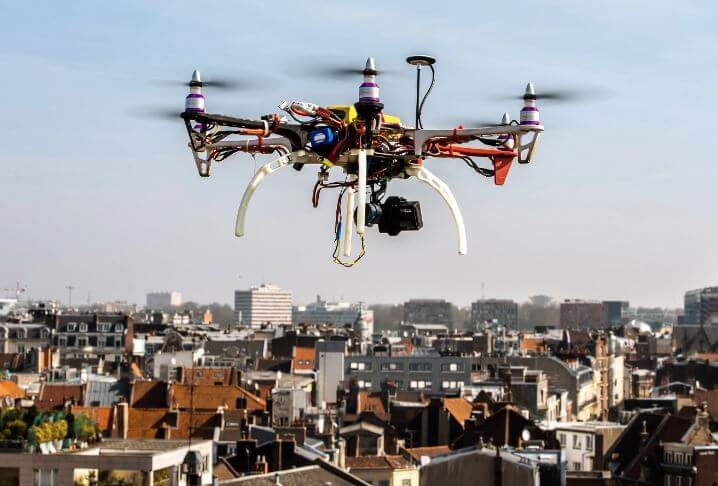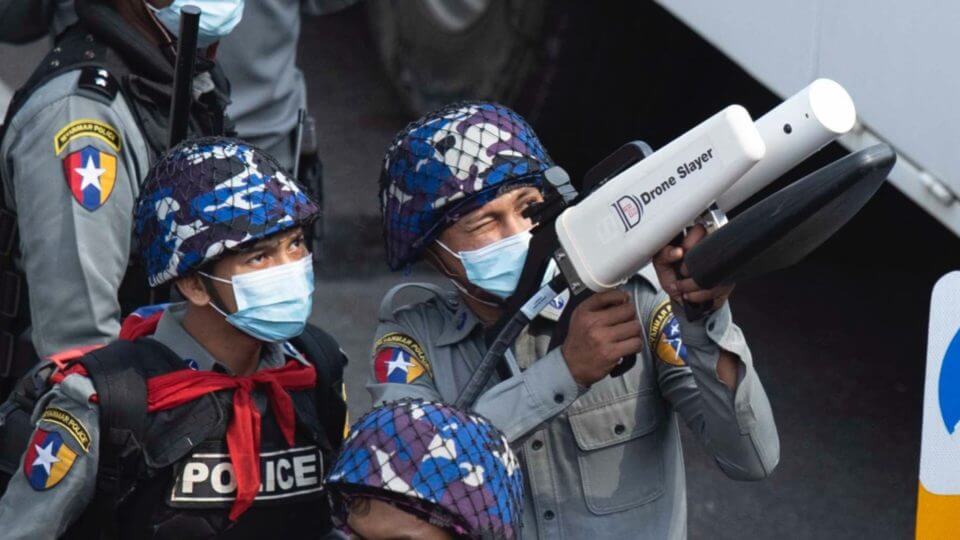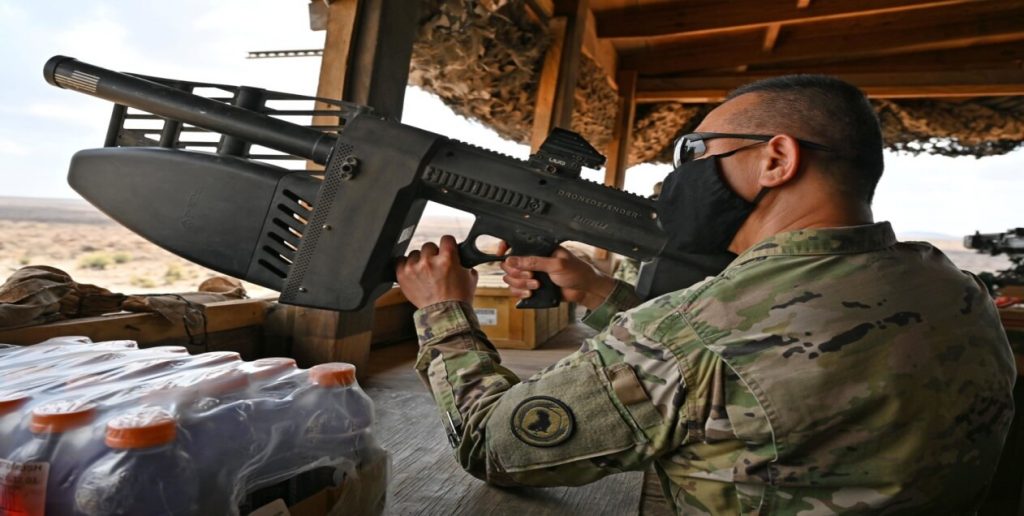
A drone is like an aircraft without a human pilot onboard. Drones can be used in various reasons including surveillance, reconnaissance, and even combat operations.
Drones are in news and are making news. As you may recall, on April 13, Iran launched a massive attack on Israel with the help of 170 armed drones, 110 ballistic missiles and 30 cruise missiles. Israel launched a retaliatory attack on Isfahan in Iran on April 19, in which, according to Cassandra Vinograd reporting from Jerusalem, they used Quadcopter drones launched clandestinely from inside Iranian territory because their air defence radars did not detect any unidentified aircraft entering Iranian airspace. It has been reported that in February, the US State Department has approved the potential sale of 31 armed MQ-9B SkyGuardian drones, related missiles and equipment to India for nearly $4 billion.
Why are Drones becoming a popular option in War

There are three reasons for it. First, though the price varies greatly according to the size, payload and technical sophistication, most of the smaller ones are usually much cheaper as compared to manned aircrafts. Second, they are very cost-effective in terms of results delivered. The New York Times reported on April 20 that over the last two months, Russian exploding drones costing as low as $500 each have taken out five of the 31 American-made M1 Abrams tanks costing $10 million each and widely acknowledged as the mightiest in the world, that the USA had given to Ukraine last Fall. According to Oryx, a very reliable military analysis site, Russian drones have destroyed at least 30 German Leopard 2 tanks also, which is as great as the Abrams.
Also Read: Will drones & UAVs change the future battlefield?
The third reason is psychological. Until the Vietnam War or the Mujahideen War in Afghanistan, nations used to be ‘manly’, which did not baulk at the thought of soldiers dying for a cause. In the Vietnam War, the USA sacrificed 58,281 soldiers’ lives with 1,53,372 wounded. The Soviets sacrificed over 15,000 soldiers in the Mujahideen War. Earlier, in the Second World War, some 20 million soldiers were killed. In the First World War, some 9.7 million soldiers had perished. In the Battle of the Somme (1916) during the First World War, the British suffered 57,470 casualties on the first day with 19,240 in dead. Wars were fought by nations that understood that you could not contemplate wars sans their horrors, mud and blood.
Of late, under the subversive and effeminizing influence of the liberals, nations have become reluctant to take human casualties. That is what is making wars more and more dependent on autonomous machines; machines that would do the ‘distasteful’ job of killing without involving humans directly. In today’s world full of ‘soft n sissy’ governments, drones and other remotely controlled instruments of war are set to play an increasingly important role.
What a fall it has been! When ‘real men’ fought ‘fairly’ with swords, the sword knew where it struck; a gun never knew whom it was going to hit! And, that’s why swords were regarded as an ‘honourable man’s weapon’, whereas a gun was regarded a scoundrel’s weapon.
Modern ‘sissies’ are hell bent on taking all the fun out of fighting, reducing fighting to a highly impersonal instrument-driven affair. Eventually, there will be a time when robots would replace humans as warriors. Hollywood has already made numerous films on this theme, such as Robo Warrior; Robot Wars; The Transformers; I, Robot; Small Soldiers; and Iron Man 2 etc.
Popular anti-Drone technologies – an overview

Before we proceed, some definitional aspects need to be cleared. UAVs (Unmanned Aerial Vehicles) are able to fly remotely such as with a controller or tablet or autonomously. Drones cannot fly autonomously. A UAS or Unmanned Aircraft Systems includes not only the UAV or Drone but also the person on the ground controlling the flight and the system in place that connects both of them. Basically, the UAV is a component of the UAS, since it refers to only the vehicle itself. Many people prefer the term ‘Remotely Piloted Aircraft’ because flying certain types of UAVs require a lot more skill than anything you could buy in a store. However, drones are the most popular term.
Also Read: Countering Drones in Urban Environments
Anti-drone, Counter-drone or Counter-UAS (C-UAS) technologies encompass a wide range of solutions to detect, classify, and mitigate drones.
There are four main types of drone detection and monitoring equipment:
- Radio frequency (RF) analysers
- Acoustic sensors (Microphones)
- Optical sensors (Cameras)
- Radar
Drone countermeasures include:
- Physically destroying the drone
- Neutralizing the drone
- Taking control of the drone
Amongst these, we have the following:
Radio Frequency Jammers: This emits a large amount of strong RF energy towards the drone, masking the controller signal.
GPS Jammers or Spoofers: They send a new signal to the target drones and replace the communication signal it uses to navigate and the drone ‘thinks’ it is somewhere else. By dynamically altering the GPS coordinates in real-time, the spoofer can control the drone’s position and make it land or crash wherever desired.
High Power Microwave Devices: By the sheer power of the RF energy thrown at the target, the EMP (electromagnetic pulse) literally fries the electronic circuitry inside drones and disrupts radio links.
Nets and Net Guns: They throw a net on the drone by a Net Cannon fired from the ground or another drone, or a hanging net deployed from a net drone to trap the drone.
High-Energy Lasers: Fires a laser to destroy the drone itself or at least its electronics.
Cyber Takeover Systems or Cyber Takedown: In this, you passively detect RF transmissions of the drones to identify the drone’s serial number and locate the pilot’s position using AI. You can then send a signal to hack the drone, assume control, and direct it to a safe location or crash it.
Cooperative Multiplatform Systems: They use a team of mini drones for the proximal sensing and tracking of intruder drones. Their cooperative behaviour ensures simultaneous perception and tracking of different moving targets, and provides efficient coverage by balancing the load of the sensing and tracking tasks amongst the sensor nodes.
Counter-countermeasures

As it happens, the overhyped sales pitch of the manufacturers and start-ups notwithstanding, drone counter-countermeasures are also commercially available and they are equally good. For example, GPS Anti-Jamming protects GPS receivers from interference and intentional jamming. In principle, they preserve the antenna’s view of the GPS satellites while ignoring jammers, ensuring the satellite signals required to compute precise position remain available.
Anti-drone technologies are generally suitable for ‘point defence’ that is, defence of a small area, such as an airport or a military facility—for example, Israel’s Drone Dome. It was also used in Argentina during the 2018 G20 Buenos Aires summit and the 2018 Summer Youth Olympics in Buenos Aires.
Most of the countermeasures are not suitable for securing long borders in view of their prohibitive cost. Any gap in coverage and the enemy will exploit them.
High technology is not always the appropriate solution

It all depends on the purpose for which drones are being used by the enemy. Most of the anti-drone technologies have been developed with big armed drones in mind. They might very well fail before low-tech drones.
This can be understood by an example. In 2006, alarmed by a spike in deadly roadside bombings in Iraq and Afghanistan, USA established a very high-profile organization JIEDDO (Joint IED Defeat Organization—now renamed JIDO, Joint Improvised-Threat Defeat Organization), to counter Improvised Explosive Devices being used by Taliban and Iraqi insurgents. It was sanctioned to spend about $2 billion a year and so much was the hype associated with it that it was hailed as a Mini Manhattan Project” or a “Later-day Manhattan Project”. Yet, the JIEDDO utterly failed in developing anything which could defeat IEDs.
One of their innovations is called Rhino pre-detonation device developed at a cost of $37 million. The Rhino features a long spindly arm attached to the front bumper of a Humvee. At the end of the arm is a black box, which is believed to engage any infrared tripwires (either physically, or with light of its own) through a heat decoy before the Humvee gets hit. The Americans thought of it because infrared tripwires are commercially available for as low as $15. The insurgents quickly modified their IEDs to beat it. I mean, who had decreed that they have to use infrared tripwires only? IEDs can be triggered in myriad ways. In fact, after Rhino, they started using high-powered radio waves from the jammers used along with the vehicles instead of heat signatures to trigger IEDs. At other times, they used wired devices. Some other high-tech projects that failed and were terminated include Trailblazer II, Rabbit 2.0A and Improvised Ordnance Disruptor.
How counter-Drone technologies are defeated

Similarly, if the enemy decides to use low-tech drones that are not ‘guided’ or ‘live-remote-controlled’, all the existing anti-drone technologies would fail.
Such low-tech drones are not to be confused with the rather costly ‘kamikaze’ drones, automated drones or autonomous drones. They would, quite likely, beat the anti-drone measures anyway.
Kamikaze or ‘suicide’ drones are essentially single-use, long-range vehicles that serve as loitering munition that will stay around an area until an operator picks a target to detonate.
Automated drones mean that the operator programs a flight path using traditional automation tools such as beacons, waypoints, and geofencing to direct a drone from point A to point B. The drone then flies automatically on that.
Autonomous drones can take some decisions without user input. AI systems gather data from sensors, satellites, cameras, and videos and then use that data to make decisions. The drone’s decision-making process isn’t confined to some fixed algorithm. It can learn from its environment and adapt to changing situations.
Though an enemy can very well use ‘kamikaze’/automated/autonomous drones in a war-like situation, their purpose of harassing the other side in a non-war-like situation would be eminently served by low-tech, ‘uncontrolled’ drones.

For example, they could use them in large numbers to spread terror by dropping small explosive payloads or bomblets on civilian populations in villages or in camps of armed forces. You can imagine the panic it would create.
Technically, they could be as simple as they come. No radio guidance, no GPS navigation, no in-flight manoeuvring, nothing. Just left to fly in a given direction at a fixed altitude and drop on the ground when they run out of battery or the flight is terminated at a pre-determined time by a simple hardware/timer mechanism, exploding their payloads. The range to which they would fly can be adjusted by the battery charge or the timer.
This type of drone cannot be countered by any electronic or RF device. The only way is ‘kinetic kill’/’hard kill’ or shooting it down physically, which is not a very reliable method particularly when a large number of them would be sent at several places simultaneously. You see, for such devices, precision of strike is not important at all; their psychological impact is important. The mere fact that bombs are falling from the sky is important. Who cares what damage they do? An explosion anywhere near a village or camp is enough to terrorize people and send them into a tizzy.
A small expenditure on such devices by the enemy can force the defending country to spend disproportionately high on various defensive measures. In fact, the defender will be obliged to spend in defensive mechanisms even if the enemy flies dummy drones.
It is like this. If Forces are contending with the problem of IEDs buried under roads or deployed along roadsides, the enemy can force you to waste enormous effort, time and resources (both human as well as technical) by deploying a hundred dummy IEDs/landmines for one genuine IED for the simple reason that you cannot take chances. The harassment by itself is a success.Moreover, the enemy country could easily disown such low-tech devices and blame them on unknown non-state actors thereby complicating the response scenario.

